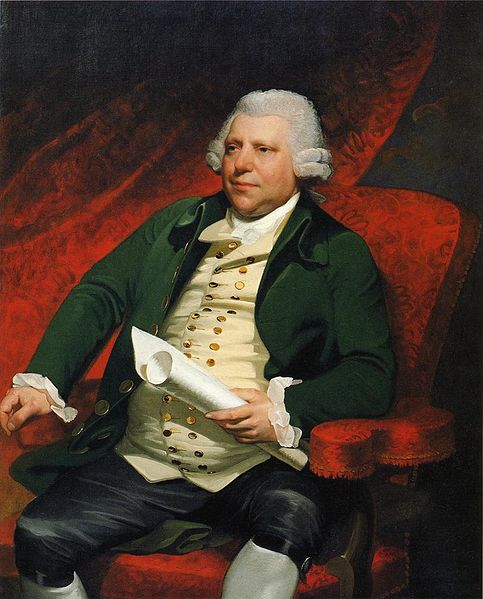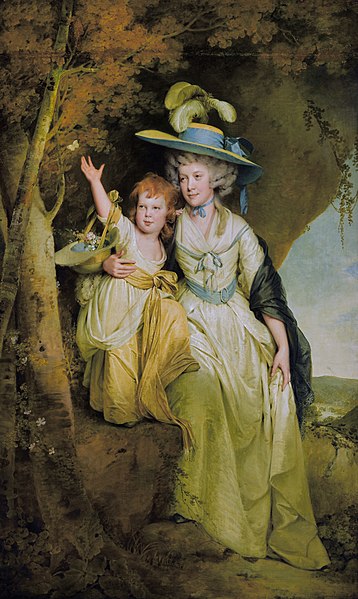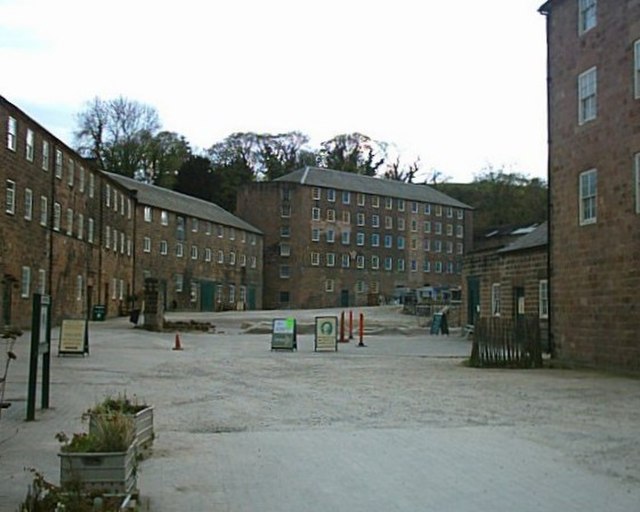Sir Richard Arkwright was an English inventor and a leading entrepreneur during the early Industrial Revolution. He is credited as the driving force behind the development of the spinning frame, known as the water frame after it was adapted to use water power; and he patented a rotary carding engine to convert raw cotton to 'cotton lap' prior to spinning. He was the first to develop factories housing both mechanised carding and spinning operations.
Sir Richard Arkwright, oil on canvas, by Mather Brown, 1790. New Britain Museum of American Art, Connecticut.
Susannah Arkwright, Mrs Charles Hurt (1762–1835), and her daughter Mary Anne (painting by Joseph Wright of Derby)
Arkwright's mill at Cromford
Masson Mill on the river Derwent, and Arkwright's house Willersley Castle, completed only after his death.
The Industrial Revolution, sometimes divided into the First Industrial Revolution and Second Industrial Revolution, was a period of global transition of the human economy towards more widespread, efficient and stable manufacturing processes that succeeded the Agricultural Revolution. Beginning in Great Britain, the Industrial Revolution spread to continental Europe and the United States, during the period from around 1760 to about 1820–1840. This transition included going from hand production methods to machines; new chemical manufacturing and iron production processes; the increasing use of water power and steam power; the development of machine tools; and the rise of the mechanized factory system. Output greatly increased, and the result was an unprecedented rise in population and the rate of population growth. The textile industry was the first to use modern production methods, and textiles became the dominant industry in terms of employment, value of output, and capital invested.

A Roberts loom in a weaving shed in the United Kingdom in 1835
A handloome weaving from William Hogarth's Industry and Idleness in 1747
John Lombe's silk mill site today in Derby, rebuilt as Derby Silk Mill
A weaver in Nürnberg, c. 1524








